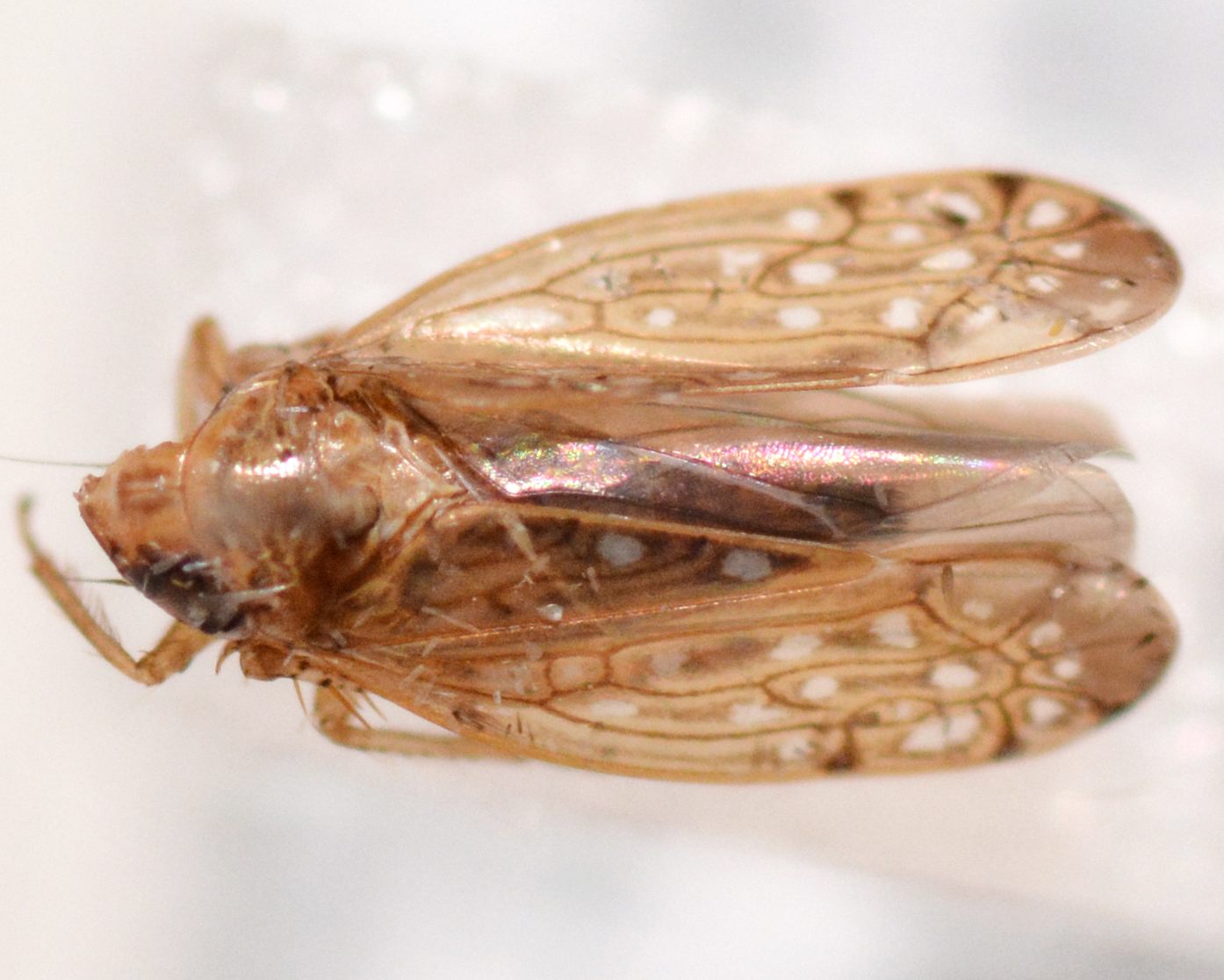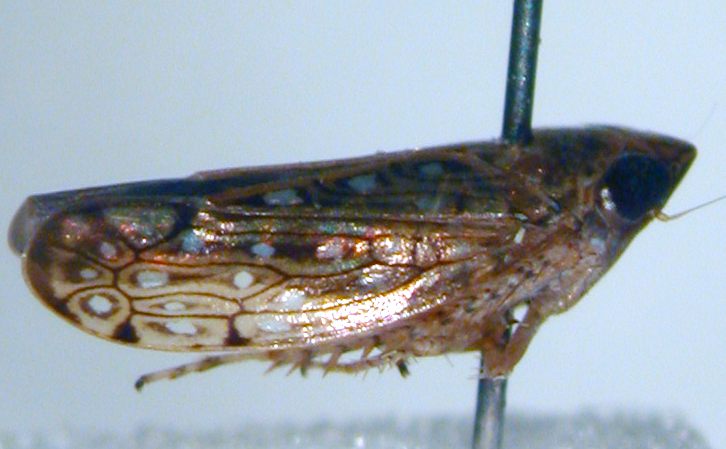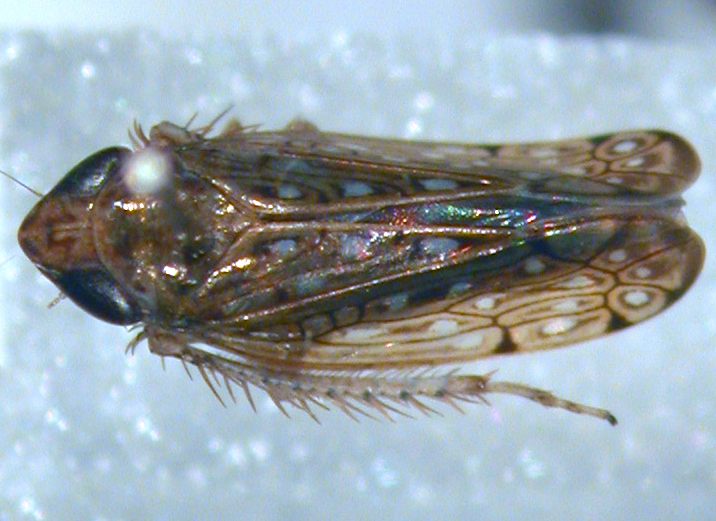Description: A fulvous brown species with a characteristic and distinctive spot pattern across the wings. The vertex is moderately long with a pointed apex, almost triangular in shape; in females, the vertex more obtuse whereas in males it is subacute. The vertex, anterior margin of the pronotum, scutellum and venter are a little lighter than the wings. There is a symmetrical step-shaped mark across the middle of the vertex, though this might be obscure in some individuals; the lines of the vertex margin are often not continuous nor parallel. The median brown line transversing the vertex though is thin but distinct. The anterior margin of the vertex has a fuscous line that is usually broken into four spots, and the frons is fulvous brown. There are some darker markings along the anterior margin of the pronotum, including a blackish dot behind each eye. The basal angles of the scutellum are obscurely fulvous. The elytral nervures are fuscous, with one to three whitish spots in each wing cell, typically outlined in brown. Along the commissure, there are three pairs of whitish claval spots; these 6 spots are distinctive to this species. The outer claval cell has a long blackish streak that is intercepted by the posterior of the white commissural spots; there is a white spot at the other end of this streak too. The claval nervures strongly approach one another and are sometimes connected, with the outer one connected to the claval suture by a transverse veinlet. The female pregenital sternite is short and triangular, with the posterior margin oblique and truncated, nearly rectilinear on either side; it is not regularly rounded at the other angles. The male subgenital plates are long and bluntly triangular, lined with stout marginal bristles. Adults are around 5.0 to 5.5 mm long. (Van Duzee 1909, Beamer 1937)
For additional images of a specimen, see: BG. |

 »
»




 »
»


